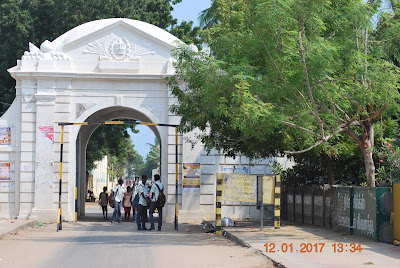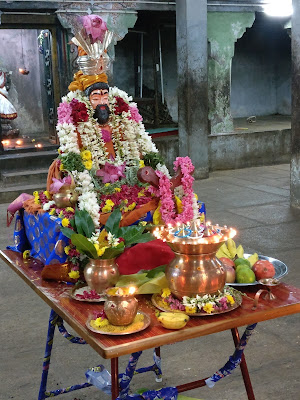A Decade of Travel - 7
2017 – Tranquebar
12th January
Everyone knows that Britain ruled us for nearly
200 years. It is also fairly common knowledge that France and Portugal ruled
parts of India, Pondicherry and Goa respectively. But how many know that
Denmark also ruled a tiny part of India for well over 2 centuries? It was to
this former maritime trading post of Denmark that I made a day trip on 12th
January. It would be one of the most rewarding journeys of my life, the reason
for which will become clear at the end of this post.
120 kms south of Pondicherry, Tranquebar, or
Tharangambadi (Land of the singing waves), as it is officially known today, is
a sleepy village on the Coromandel coast. A Danish expedition, led by Admiral
Ove Giedde arrived here in 1620 and established a fort – Dansborg. Danish
officials and merchants lived inside this fort for more than 225 years, before
ceding control to British in 1845. Dansborg, with a kitschy pink façade, is now
a museum and houses some memorabilia and artefacts.
Tranquebar has another historic importance. It
was here that the first Protestant church of India, the New Jerusalem Church,
was established in 1718. Bartholomaus Ziegenbalg, the Lutheran evangelist
arrived in 1706 as an envoy of King Frederick. The first native Indians were administered
baptism by Ziegenbalg in 1707 in the Zion Church. A shiny golden statue of the evangelist
stands prominently with a black plaque listing 24 firsts to his credit,
including translating Bible into Tamil.
We reached Tranquebar after a 2-hour
drive from Pondicherry. After taking in Dansborg, we had a long leisurely lunch
in the sprawling verandah of “Bungalow on the Beach”, a heritage property
restored and converted into a luxury hotel.
After lunch we walked along the three streets
of the village – King’s street, Queen’s street and Admiral street – admiring the
restored facades of some of the old private mansions. The finest example of restoration
work is the Governor’s residence with a façade of 8 imposing columns.
The maritime museum was a tiny nondescript
structure. It was locked and even as we wondered if it would ever open, the caretaker
materialised on a bike and admitted us in.
We also visited the Zion Church, where the
pastor welcomed us warmly and showed us around.
We lingered on the craggy shoreline hoping to
catch the moonrise; it was a full moon night. On the shore is the Masilamani
Nathar temple dedicated to Shiva. It dates back to the Pandian era of 13th
C.
On the way back to Pondicherry, we made a brief
stopover at Thirukadaiyur for a quiet moment.
Weeks after this trip, I wrote an article and The Hindu featured it spectacularly in its Sunday Magazine. Tharangambadi's tug-of-war with time
The article can be
digitally accessed HERE.


















Comments
Post a Comment